A German Shorthaired Pointer feeding chart is an essential tool for providing your furry companion with the right amount of food and nutrients it needs to thrive.
This active and versatile dog breed requires a well-rounded diet to support its athleticism and endurance. These dogs are known for their high energy levels and need a diet that can keep them in tip-top shape.
Maintaining a healthy weight and preventing obesity are crucial for the overall health of your German Shorthaired Pointer.
In this blog article, we will provide you with a detailed German Shorthaired Pointer feeding chart, including information on the types of food, serving sizes, and recommended frequency of meals.
We’ll also discuss the key nutrients that are essential for this breed and how to ensure your dog is getting enough of them. With the proper diet, your German Shorthaired Pointer will be happy, healthy, and ready for all of life’s adventures.
German Shorthaired Pointer Feeding Chart For Puppies
| Dog’s Age | Dog’s Weight | Recommended Daily Intake |
|---|---|---|
| 3 months old | 10 pounds | 1.75 cups |
| 5 months old | 20 pounds | 2.5 cups |
| 9 months old | 40 pounds | 3 cups |
| 12 months old | 50 pounds | 3.5 cups |
| 16 months old | 60 pounds | 4 cups |
| 18 months old | 70+ pounds | 5 cups |
German Shorthaired Pointer Feeding Chart For Adult Dogs
| Dog’s Age | Dog’s Weight | Recommended Daily Intake |
|---|---|---|
| 18+ months | 30 pounds | 2 cups |
| 18+ months | 40 pounds | 2.67 cups |
| 18+ months | 50 pounds | 3 cups |
| 18+ months | 60 pounds | 3.5 cups |
| 18+ months | 70+ pounds | 4 cups |
German Shorthaired Pointer Feeding Chart For Senior Dogs
| Dog’s Age | Dog’s Weight | Recommended Daily Intake |
|---|---|---|
| 8+ years | 30 pounds | 2 cups |
| 8+ years | 40 pounds | 2.33 cups |
| 8+ years | 50 pounds | 3.25 cups |
| 8+ years | 60 pounds | 3.5 cups |
| 8+ years | 70+ pounds | 3.75 cups |
How Often Should I Feed My German Shorthaired Pointer?
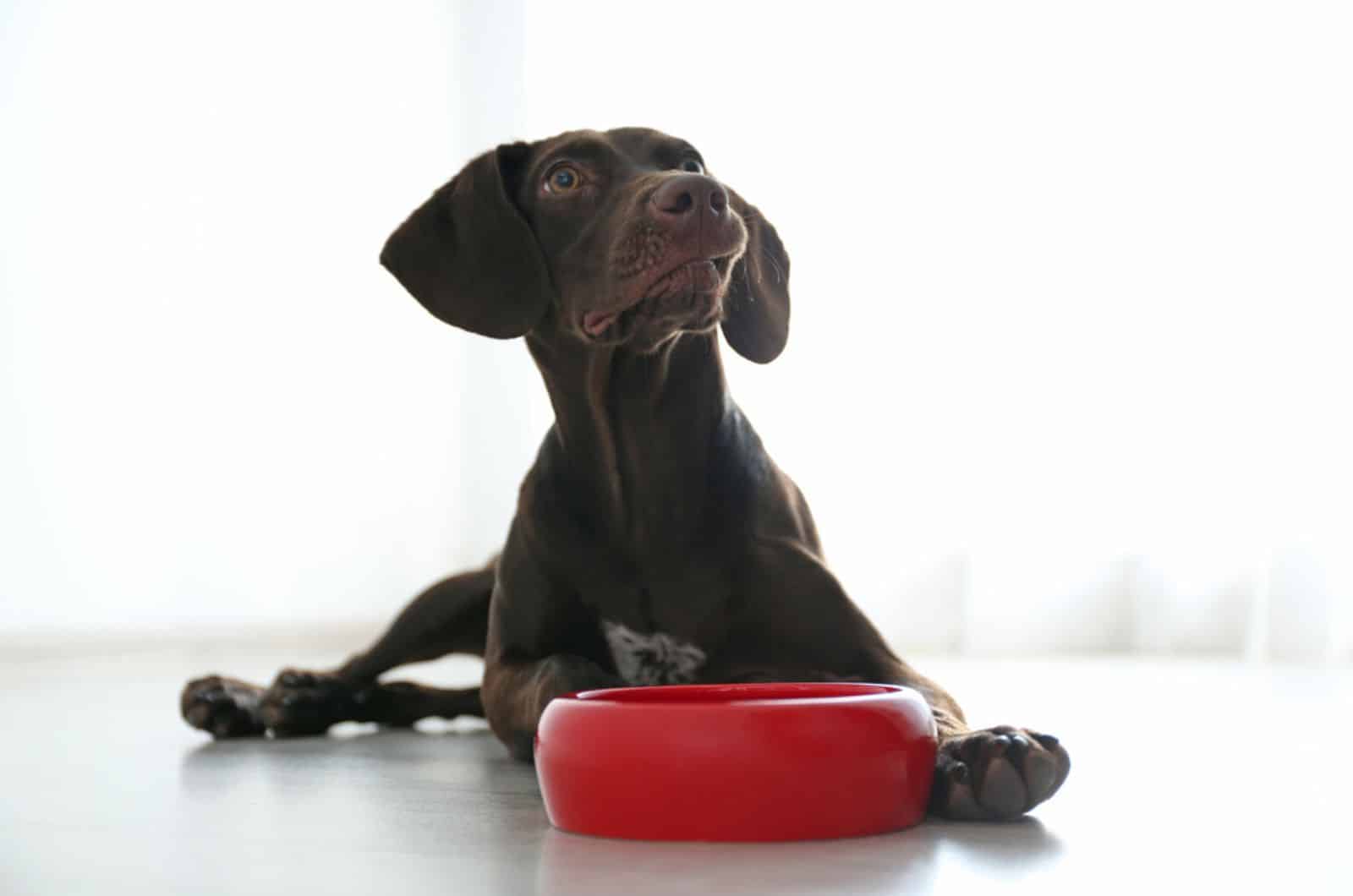
When it comes to feeding your German Shorthaired Pointer, the frequency of mealtimes is just as important as the amount and types of food you provide.
The ideal feeding schedule for this active dog will depend on factors such as age, size, and activity level.
Adult German Shorthaired Pointers typically do well with two meals per day. Feeding them once in the morning and again in the evening can help keep their energy levels stable throughout the day.
Puppies, on the other hand, may require more frequent feedings, such as three to four small meals throughout the day. This will help support their rapid growth and development.
It’s also worth noting that this breed is prone to becoming overweight if they are overfed, so it’s important to stick to the recommended portion sizes outlined in the German Shorthaired Pointer feeding chart.
If you’re not sure about how often to feed your GSP or if you’re concerned about their weight, it’s a good idea to consult with your veterinarian for guidance. They can provide you with personalized feeding recommendations based on your dog’s specific needs.
It is also worth noting that a good practice of feeding would be to make sure water is always available to them, keeping them hydrated is also important for their overall well-being.
Transitioning From Puppy Food To Adult Dog Food
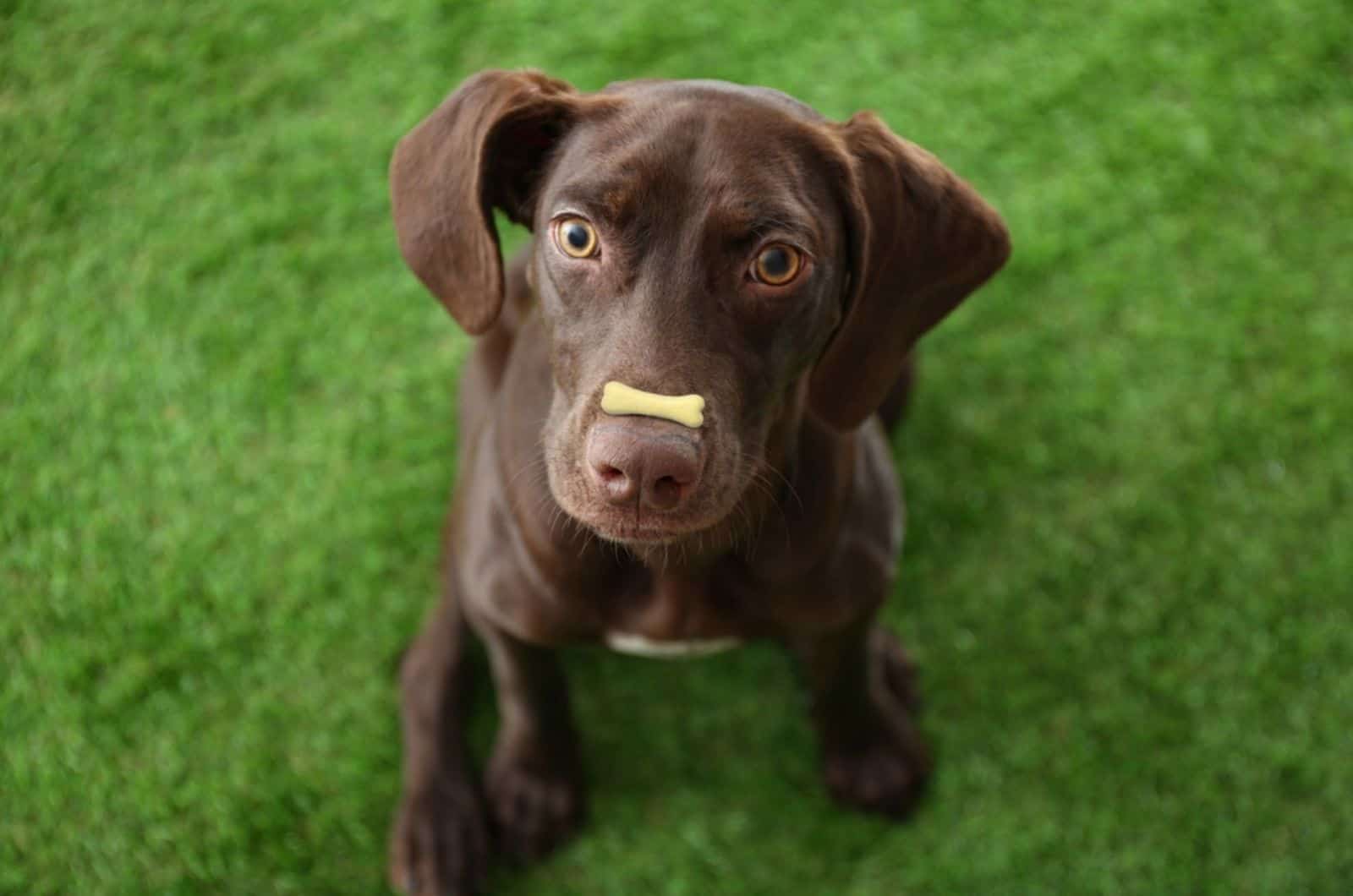
As your German Shorthaired Pointer puppy grows and reaches adulthood, it’s important to transition them from puppy food to adult dog food.
Puppy food is formulated to provide the extra nutrients and calories that growing dogs need, but as they reach maturity, they will require a different balance of nutrients to maintain a healthy weight and support their adult activity levels.
A good way to transition your dog from puppy food to adult food is to gradually mix the two types of food over the course of 7-10 days, gradually increasing the amount of adult food while decreasing the amount of puppy food.
This will help your pooch adjust to the new food and reduce the risk of stomach upset.
It’s also important to note that the transition from puppy to adult food should be based on the individual dog, you can use your German Shorthaired Pointer’s body condition and development as a guide.
Your veterinarian can also give you a general guideline on when to transition your dog from puppy to adult food.
A well-balanced diet is crucial for maintaining your dog’s overall health and vitality, so it’s important to take the time to make the transition from puppy food to adult dog food in a gradual and controlled manner to ensure that your German Shorthaired Pointer stays happy and healthy.
What Is The Best Food For German Shorthaired Pointers?

When it comes to feeding your German Shorthaired Pointer, the best food for them will be a high-quality, nutritionally balanced diet that’s appropriate for their age, size, and activity level.
The best diet for a German Shorthaired Pointer should be rich in protein, as this breed requires a high amount of protein to support its muscle development and maintenance.
Look for a food that has high-quality animal proteins like chicken, fish, or lamb as the first ingredient.
Additionally, the food should be formulated to provide them with the correct amount of essential fatty acids, vitamins, and minerals to support their overall health and help prevent issues such as hip dysplasia, bloat, or progressive retinal atrophy.
Grain-free diets can also be a good option for German Shorthaired Pointers, as they are less likely to cause any potential food allergies or sensitivities.
It’s also worth considering food that can be easily digestible, and that has a moderate fat content, which is more appropriate for a more active breed like German Shorthaired Pointer.
Consulting with a veterinarian, a breeder, or a pet nutritionist for personalized recommendations for your dog’s individual needs would be the best way to ensure that your German Shorthaired Pointer is getting the best nutrition.
Dry Food
Dry dog food, also known as kibble, is a convenient and budget-friendly option for German Shorthaired Pointers.
Kibble is easy to store and can be left out for your dog to eat as needed. It is also easy to measure and control the portion size.
When choosing dry food for your German Shorthaired Pointer, look for a good-quality, protein-rich formula that is appropriate for their life stage and activity level.
Avoid food with a high amount of fillers or by-products and choose one that has high-quality animal proteins as the first ingredient.
Wet Food
Wet food typically has a higher meat content, as well as a higher water content, than dry food and can be a good way to incorporate variety into their diet.
When choosing wet food for your German Shorthaired Pointer, make sure to choose one that is made with high-quality ingredients, and avoid ones with added fillers or by-products.
Wet food also typically has a shorter shelf life than dry food, and it’s important to check the expiration date before feeding it to your dog.
Homemade Food
Preparing homemade food for your German Shorthaired Pointer can be a great way to control the ingredients and ensure that your dog is getting a well-balanced diet.
You can include a variety of ingredients such as lean meats like boiled chicken, as well as vegetables and grains.
When preparing homemade food for your German Shorthaired Pointer, it’s essential to consult a veterinarian or a pet nutritionist to ensure that the food you’re providing contains the right balance of nutrients.
It’s also important to note that homemade food should be stored and handled properly, to prevent bacterial contamination or spoilage.
Related: 7 Vet Approved Homemade Dog Food Recipes For Kidney Disease
Raw Food
A raw food diet for German Shorthaired Pointers consists of uncooked meats, fruits, and vegetables, and can mimic the raw meat diet of their wild ancestors.
Raw diet enthusiasts believe that this type of diet is more natural and biologically appropriate for dogs. However, it is important to note that it should be handled and prepared carefully as it carries a risk of bacterial contamination.
It’s also important to consult a veterinarian or a pet nutritionist before starting raw feeding, in order to ensure that your dog is getting the right balance of nutrients and it is safe for them.
What Foods Should I Avoid?
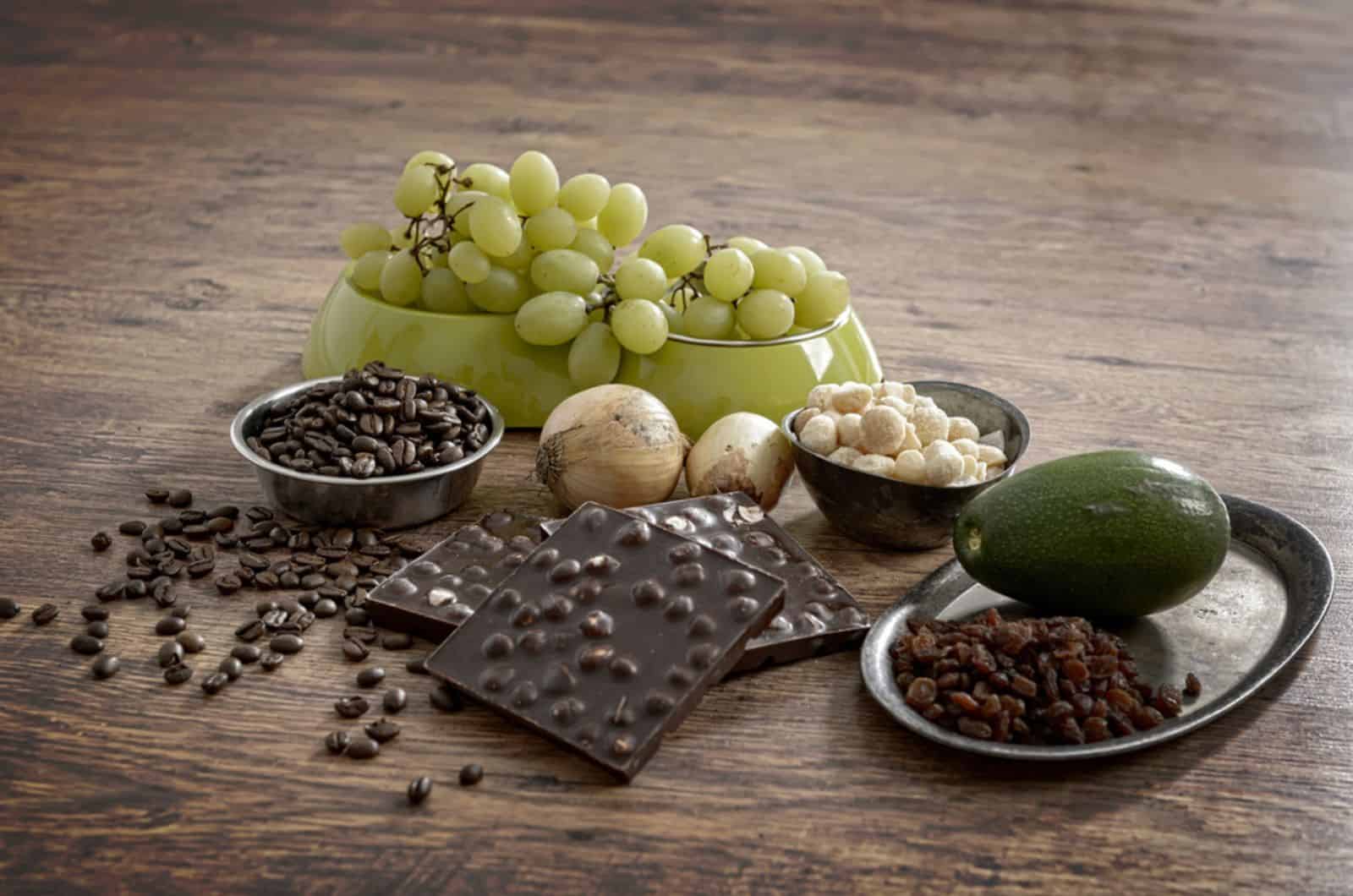
When it comes to feeding your German Shorthaired Pointer, it’s important to be aware of certain foods that can be harmful to their health.
Firstly, you should avoid table scraps. Foods like fatty meats, chocolate, onions, and garlic can be toxic to dogs and should be avoided.
Another food that is common in the human diet, but should be avoided in a canine diet is grapes. Grapes and raisins can be toxic to dogs and even a small amount can cause kidney failure.
And something that both humans and dogs should probably avoid as much as they can is overly processed foods. Processed meats and snacks often contain artificial preservatives, colors, and flavors which can be harmful to your dog’s health.
It’s also important to be mindful of any food allergies or sensitivities your dog may have and to consult with your veterinarian before introducing any new foods to their diet.
Please note that even some “human-grade” ingredients such as certain nuts, avocados, mushrooms, etc. can be toxic to dogs. So, it is always better to consult with a veterinarian before adding something new to their diet.
Also, you should avoid certain food brands, particularly the cheap ones, as they typically have low-quality ingredients.
Dog Supplements

Whether or not you should give supplements to your German Shorthaired Pointer depends on their individual needs and dietary habits.
While it’s true that a well-balanced, high-quality diet can provide most of the nutrients your dog needs, there may be certain situations where supplements can be beneficial.
For example, if your dog has a specific health condition or nutritional deficiency, supplements may be necessary to ensure they are getting the right amount of certain vitamins or minerals.
Or if your dog is aging and might require extra support for their joints, supplements like Glucosamine and Chondroitin can be considered.
Another situation where supplements might be helpful is when you are feeding your German Shorthaired Pointer a homemade diet, as it is difficult to ensure that the diet is balanced and contains all the essential nutrients.
It’s also important to keep in mind that some supplements may interact with any medications your dog is currently taking, so be sure to consult with a veterinarian before starting any supplement regimen.
They can help you to determine the best course of action and recommend the best supplements for your German Shorthaired Pointer.
How Many Treats Is Too Many?
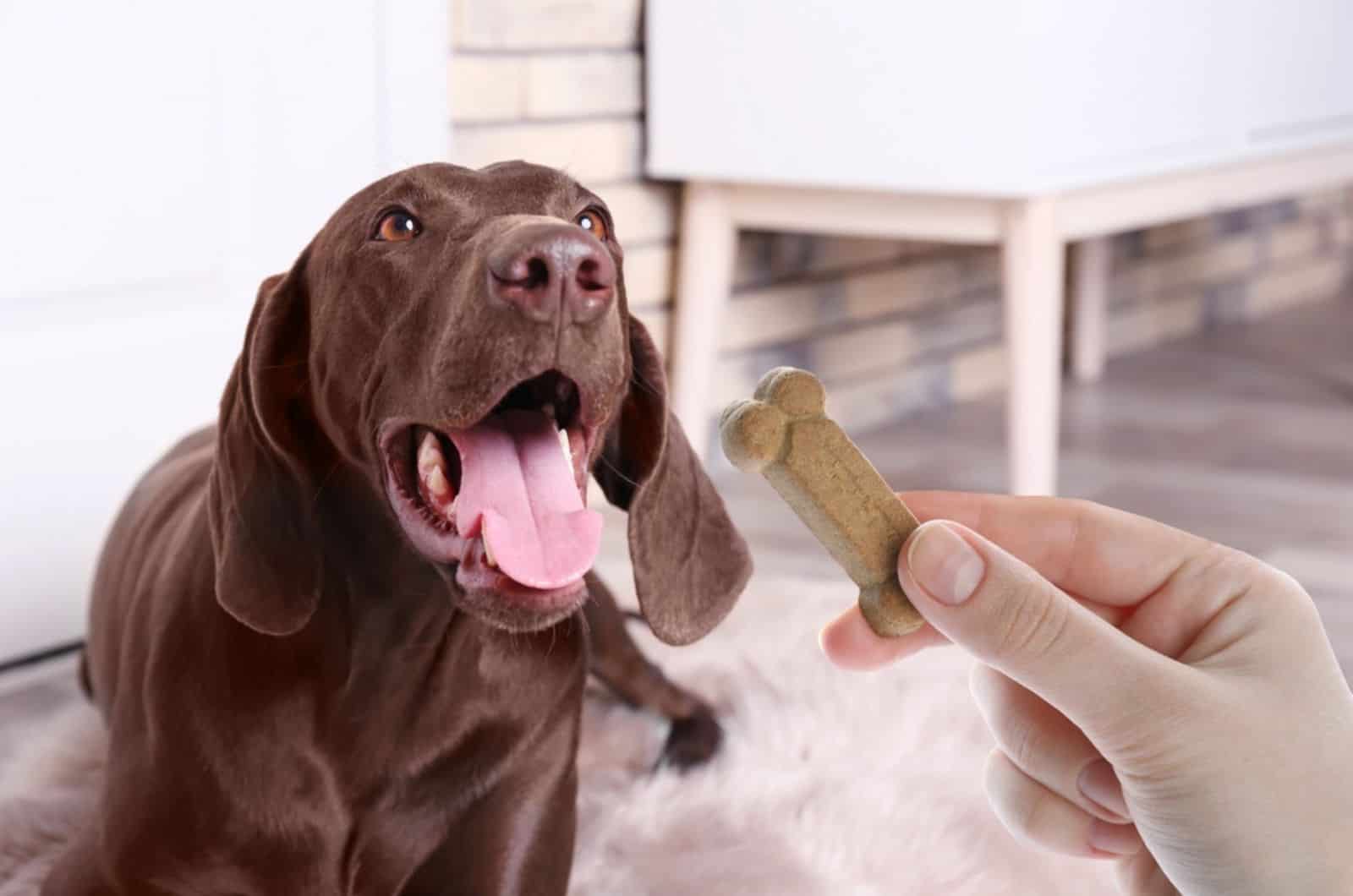
Treats can be a great way to reward and train your German Shorthaired Pointer, but it’s important to remember that they should be given in moderation.
Treats should make up a maximum of 10% of your dog’s daily calorie intake. If it’s any more than that, you risk causing weight gain and other health problems. It’s also important to consider the calorie content of the treats you’re giving to your dog.
Some treats can be quite high in calories, so you’ll need to adjust the amount of their regular food accordingly to prevent them from consuming too many calories overall.
When it comes to the frequency of treating, it’s best to use treats strategically rather than giving them all the time, for example, during training or as a reward for good behavior. Avoid using treats as a way to constantly keep them occupied, or to cure boredom.
It is always best to make sure that you are using treats as a way of reinforcing positive behavior and not overdoing it.
It’s also important to note that not all treats are created equal, some commercial treats are high in fat and preservatives, it’s important to check the label and avoid giving your dog treats that have a high amount of unhealthy ingredients.
Choose treats that are natural and have a high protein content, and avoid treats that have a high sugar or salt content.
What Is The Ideal Weight For My German Shorthaired Pointer?
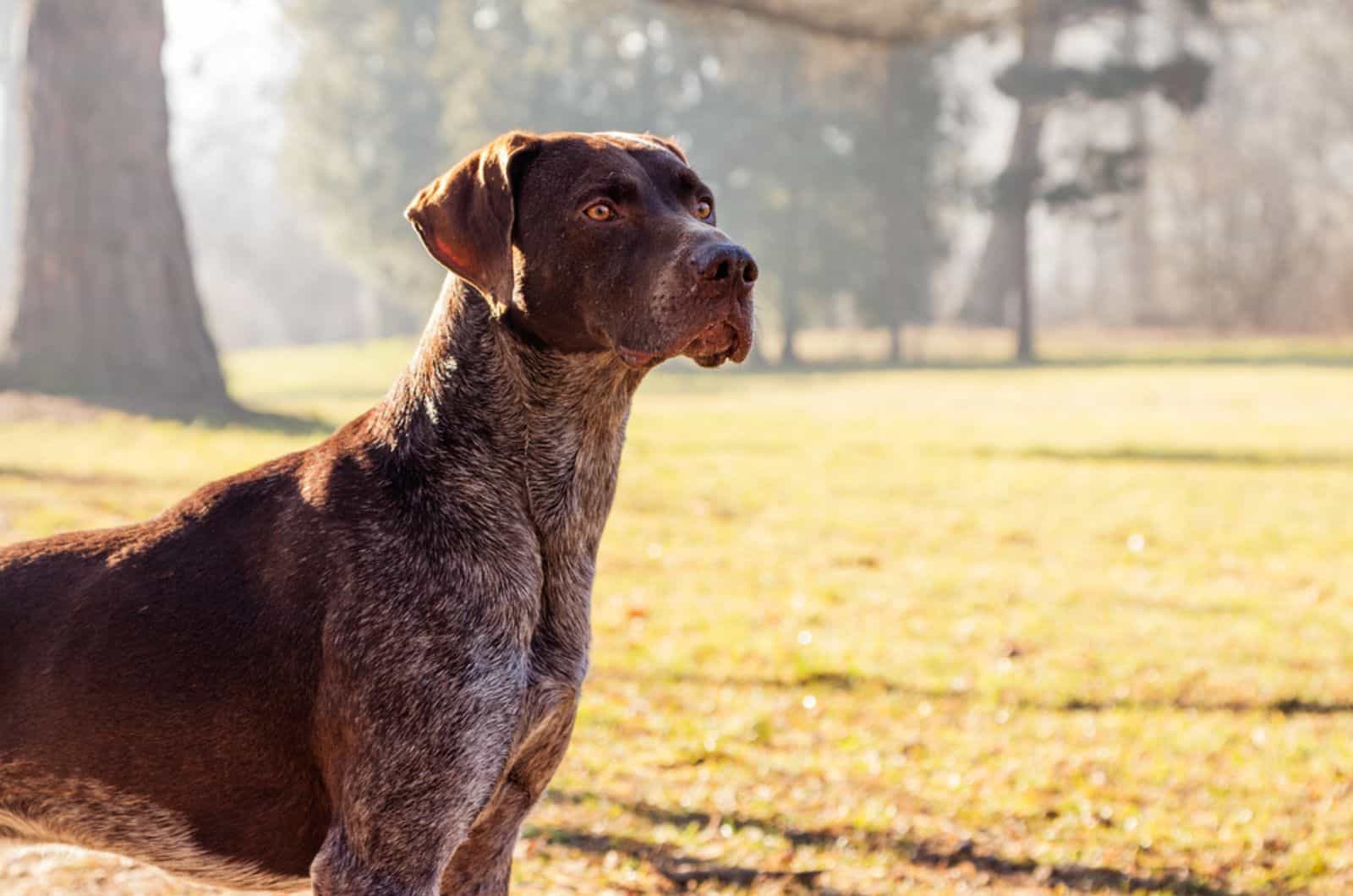
For adult German Shorthaired Pointers, a healthy weight range would be between 45-60 pounds for females and 55-70 pounds for males. This is according to the American Kennel Club, but these weight ranges may vary depending on the build, size, and height of the dog.
The ideal weight for a German Shorthaired Pointer can vary depending on factors such as age, gender, and overall health. However, as a general rule, German Shorthaired Pointers should have a lean and muscular appearance, with a visible waist and defined chest.
It’s important to keep in mind that these are general guidelines and that every dog is unique. If you’re unsure about your dog’s ideal weight, it’s best to consult with your veterinarian.
They can examine your dog and take into account their overall body condition and health status to determine its ideal weight.
It’s also important to monitor your dog’s weight regularly and take steps to maintain a healthy weight.
Additionally, providing plenty of exercise and physical activity can help your dog to maintain a healthy weight, as well as help them to maintain good overall health and well-being.
What If My German Shorthaired Pointer Is Overweight?
If your German Shorthaired Pointer is overweight, it’s important to take steps to help them reach a healthy weight.
It’s important to remember that weight loss should be done gradually and that your dog’s progress should be monitored and evaluated by a veterinarian. Rapid weight loss can be dangerous and can cause health problems.
Below are some steps you can take to help your German Shorthaired Pointer lose weight.
Consult With Your Veterinarian
Your veterinarian can examine your dog and provide you with a personalized plan for weight loss. They can also rule out any underlying medical conditions that may be contributing to your dog’s weight gain.
Adjust Its Diet
Feed your German Shorthaired Pointer a diet that is high in protein and low in calories. Gradually reduce their portion sizes, and avoid giving them table scraps or high-calorie treats.
You can also consider switching to a low-calorie or weight-management dog food.
Increase Its Physical Activity
Regular exercise is essential for weight loss. Gradually increase the amount of time you spend exercising your dog each day, aiming for a minimum of 30-60 minutes of moderate to vigorous activity each day.
Monitor Its Progress
Keep track of your dog’s weight and body condition score, and make adjustments to their diet and exercise regimen as needed.
It’s also important to note that a weight loss program is not something that can be done overnight and it requires patience, consistency, and dedication.
What If My Pointer Is Too Skinny?
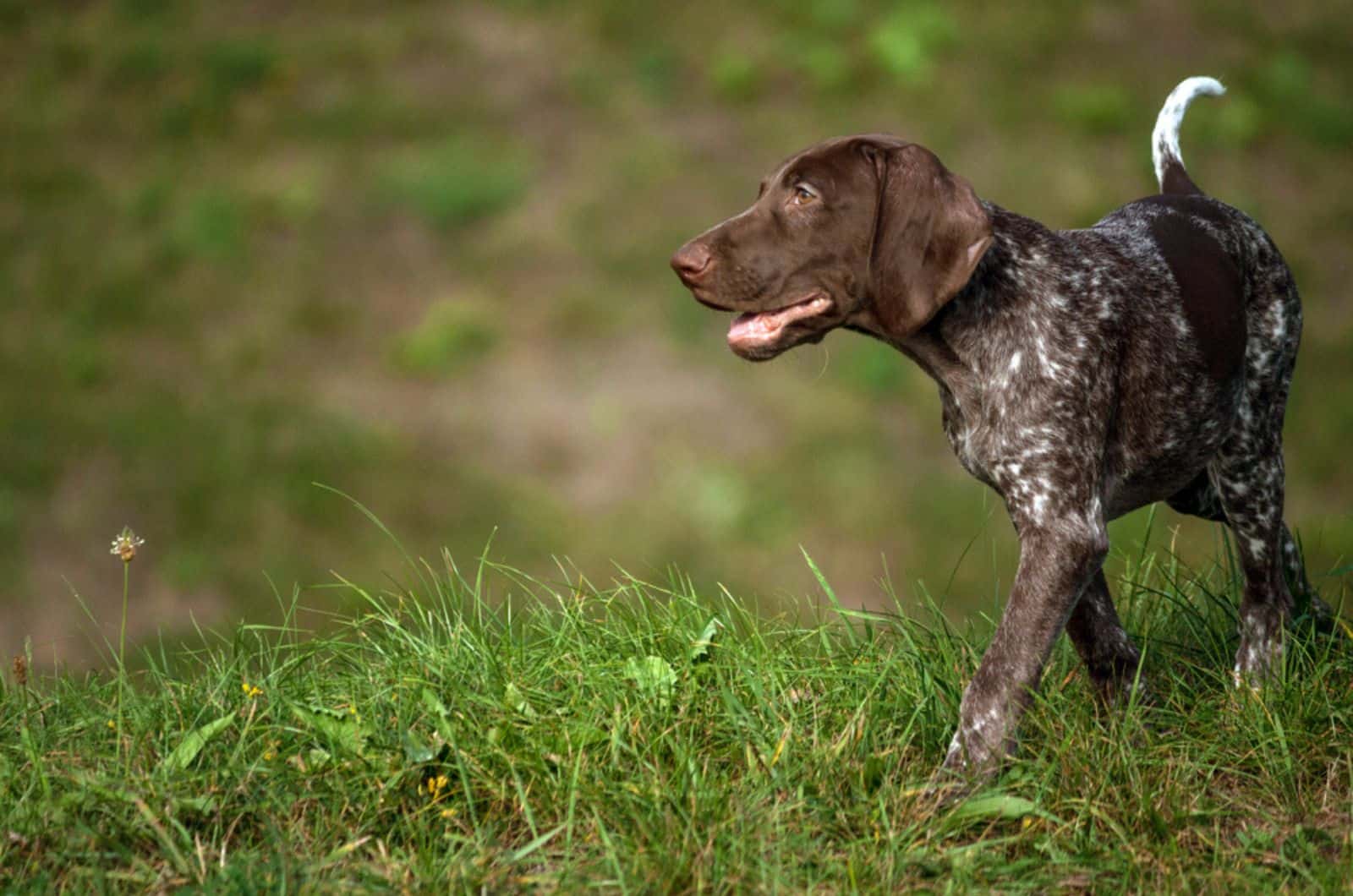
If your German Shorthaired Pointer is too skinny, it’s important to take steps to help them gain weight and reach a healthy weight.
Being underweight can lead to a number of health problems, such as a weakened immune system, decreased ability to fight off infections, and poor coat quality.
It’s important to remember that weight gain should be done gradually and that your dog’s progress should be monitored and evaluated by a veterinarian. Sudden weight gain can be dangerous and can cause health problems.
Take a look at the tips we have provided below.
Consult With Your Veterinarian
Your veterinarian can examine your dog and rule out any underlying medical conditions that may be causing weight loss. They can also provide you with a personalized plan for weight gain.
Increase Its Food Intake
Gradually increase the amount of food you’re providing your dog. Try to feed them at least two or three small meals a day, rather than one large one.
Make sure that the food is high-calorie and high-protein to promote weight gain.
Add Healthy Fats
You can add sources of healthy fats to your dog’s food such as fish oil, flaxseed oil, or coconut oil. These are high in calories and can help your dog gain weight.
You can just mix them up with your dog’s regular food occasionally.
Monitor Its Progress
Keep track of your dog’s weight and body condition score, and make adjustments to their diet as needed.
Make sure to do it in cooperation with your veterinarian as they will know how to draw the right conclusions from your dog’s progress and suggest any changes.
Consider Nutritional Supplements
If your dog has a specific nutrient deficiency, your veterinarian may recommend a supplement to increase your dog’s calorie intake and to ensure they are getting the right balance of nutrients.
What If My German Shorthaired Pointer Refuses To Eat?
If your German Shorthaired Pointer refuses to eat, it can be a cause for concern. There are several potential reasons why your dog may be refusing food, including health issues, changes in diet, or stress.
In the paragraphs below, we have listed some steps you can take to help encourage your dog to eat.
Consult With Your Veterinarian
Your veterinarian can rule out any underlying medical issues that may be causing your dog to refuse food, such as dental problems, gastrointestinal issues, or a fever.
Evaluate Its Diet
Consider whether you’ve recently changed your dog’s diet or feeding schedule. Sometimes dogs can be picky eaters, and it might take some time for them to adjust to a new food. Try to offer them a variety of foods to find what they prefer.
Check The Environment
Make sure that your dog’s eating area is comfortable, quiet, and free from distractions. Also, ensure that their water and food bowls are clean.
Address Stress
If your dog is stressed, anxious or depressed, it can cause them to lose interest in eating. Identify and address the source of stress. try to create a more relaxed and calm environment for your dog.
Try Different Food Presentations
Sometimes dogs may refuse food because of the way it is presented. You can try warming up their food or adding a small amount of low-salt broth to make it more appealing.
Consider Appetite Stimulants
If your dog’s anorexia (refusal to eat) persists or you’re worried, you can talk to your veterinarian about appetite stimulants which can help to increase your dog’s appetite.
Related: 8 Best Home Remedies For A Sick Dog Not Eating
Conclusion
In conclusion, a German Shorthaired Pointer feeding chart is an essential tool in ensuring your dog is getting the right nutrition and maintaining a healthy weight.
It’s important to feed your dog a high-quality, nutritionally balanced diet that is appropriate for its age, size, and activity level.
And being mindful of the ingredients and considering the right food presentation can make a huge difference in how much your German Shorthaired Pointer eats.
Additionally, keeping track of its weight and consulting with a veterinarian if you have any concerns about your pup’s diet or weight, is an essential part of being a GSP owner, and a dog owner in general.
By following these guidelines, you can ensure that your German Shorthaired Pointer is getting the nutrition it needs to stay healthy and happy.
Remember that patience, consistency, and dedication are key when it comes to feeding your dog.













